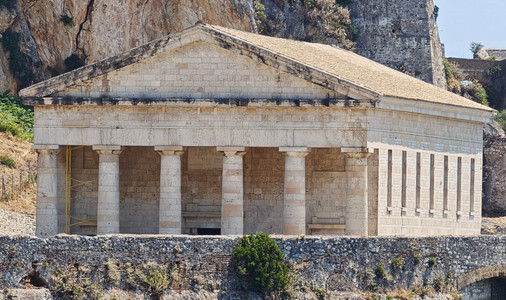Seeking Refuge & Hospitality in Corfu
- muse7699
- Aug 17
- 2 min read

In the Ancient times, Corfu has a recurring role as a place of refuge and hospitality in Greek mythology. Poseidon, Odysseus, Jason all have strong connections to the island.

Corfu, also known as Kerkyra in Greek, dates back to the 8th century BC when it was colonized by the Corinthians. Poseidon, the god of the sea, fell in love with Kerkyra, the daughter of the river god Asopus and brought her to the lush, uninhabited island in the Ionian Sea and named it after her — Korkyra, the ancient name for modern Corfu. Their union produced a son Phaeax, the ancestor of the Phaeacians. Figurines of nymphs have been discovered in the cave at Kardaki, used as offerings to the Nymphs, showcasing a cult like following.


The great poet Homer is believed to have been born on the island of Corfu which takes a major role in the poem, "Odyssey." Many real places have been suggested as the fictious island of Scheria, the most popular being Corfu. After Odysseus is shipwrecked, he washes ashore on Scheria and is discovered by Nausicaa, the daughter of King Alcinous and Queen Arete. The Phaeacians hospitably receive Odysseus, listen to his adventures, offers him a ship and ultimately help him return to his home in Ithaca.

After obtaining the Golden Fleece, Jason and his crew encounter a storm sent by Zeus, which drives them to Corfu. They seek refuge and are hosted by Alcinous and Arete,
The main temple on the island of Corfu is dedicated to the Goddess Artemis. While only stones remain of the temple, many artifacts are housed in the Archaeological Museum.
Corfu's location at the crossroads of the Mediterranean led to various civilizations controlling the flow of materials, religion and knowledge during its 3000-year history. From the first Greek colonialization to the Roman takeover after the Peloponnesian war to the destruction of the city by the Goths. The Byzantine Empire rebuilt the city and refortified the old fortress. The Normans conquered the city, but their reign didn't last long. Both the Sicilians and the Venetians helped rebuild the old town with multi storied buildings on narrow winding lanes. In modern times the French and British have also ruled the island influencing food, culture and sport. So, close your eyes, step back in time and let the magic of the island wash over you.


















Comments